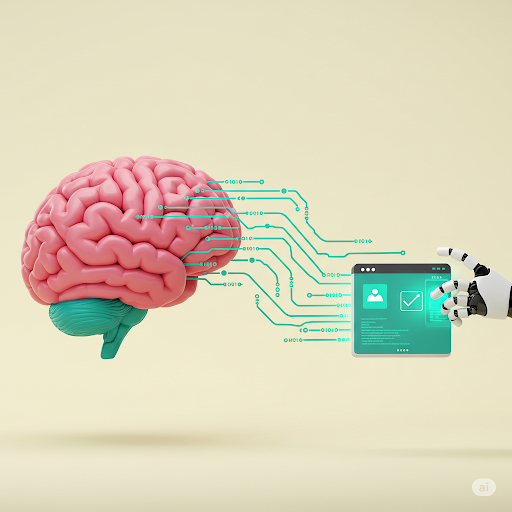Attention Chief Digital Officers, you are acutely aware of the challenges posed by the rapidly evolving landscape of cloud and digital technologies on the Software Development Life Cycle (SDLC). According to Gartner, 90% of organizations have already adopted cloud infrastructure, and 70% have embraced multi-cloud strategies. This transition has resulted in more software releases, imposing immense pressure on development teams to create high-quality solutions that match end users’ expectations.
Customer experience assurance is equally important to Quality Assurance (QA), which is no longer just restricted to testing SMAC (Social, Mobile, Analytics, and Cloud) apps. Forrester’s research shows that organizations with effective QA processes are 50% more likely to deliver software on time and within budget.
However, with the complexity of the SDLC on the rise, traditional QA approaches are no longer enough. Assurance services need to sync with your customers’ digital behaviours and touchpoints. This will assist enterprises to bring value into the whole customer chain. There is a need for building Digital Assurance capabilities that address the specific challenges posed by cloud and digital technologies. But how?
Understanding Digital Assurance
Digital assurance services can deliver numerous benefits, including streamlined workflows, improved capacities, accelerated product delivery, and exceptional customer experiences. Agile and DevOps methodologies in software development and testing have revolutionized the field, sharpening the science of digital assurance solutions. The key components of Digital Assurance include:
Data Assurance: Tests the accuracy, completeness, and security of data stored in the cloud and digital systems.
Business Value Chain Testing: Examines the flow of business processes in the cloud and digital systems to ensure they meet end-user needs and support overall business strategy.
Localization Testing: Tests software for cultural and linguistic requirements in different regions.
Usability/Accessibility Testing: Ensures software is easy to use and accessible to users with disabilities.
Implementation Challenges
The implementation of Digital Assurance is not without its challenges.
Inadequate integration of testing practices: Testing practices must be integrated throughout the software development lifecycle. This necessitates a thorough grasp of the testing process and the integration of testing methods into the development process.
Challenges with data management and privacy: With the increasing volume and complexity of data, companies must be able to efficiently manage and safeguard data while maintaining compliance with current privacy laws and regulations.
Lack of standardization: The lack of industry-wide standards for Digital Assurance can make it difficult for enterprises to develop a consistent and effective strategy.
Challenges with measuring and tracking results: Measuring the effectiveness of Digital Assurance programs can be challenging, as it can be difficult to accurately track and measure testing results and assess the impact on overall software quality.
Building In-house Digital Assurance Capabilities
Addressing these challenges requires a combination of technical expertise, clear planning, and a commitment to continuous improvement. A well-equipped Digital Assurance team can assist organizations in navigating the complexities of modern software development and testing techniques and overcoming the hurdles of implementing Digital Assurance.
Here’s a table exclusively for you! Key skills to consider building a strong Digital Assurance capability in-house best practices.
Key Skills & Competencies
Best Practices for Building a Strong Digital Assurance Team
Knowledge of cloud and digital technologies
Investing in training and development for team members
Familiarity with software development and testing practices
Implementing a comprehensive testing strategy that covers all key components of Digital Assurance
Understanding of quality assurance principles and methodologies
Building strong partnerships with other teams, such as software development and product management
Experience with testing tools and techniques
Regularly reviewing and updating processes and tools to ensure they are up-to-date and effective
By following these best practices, organizations can build a strong Digital Assurance capability that delivers high-quality software and supports their overall digital transformation efforts.
Partnering with Advanced Providers
Organizations seeking to enhance their Digital Assurance practices should consider working with a trusted Digital Assurance provider. This partnership can provide access to the necessary expertise, resources, and innovative technologies and processes for a successful Digital Assurance strategy.
When choosing a partner, enterprises should consider criteria such as; their relevant knowledge and expertise, ability to deliver high-quality software, strong technical capabilities, and ability to react to changing customer expectations and industry trends. A trustworthy Digital Assurance partner can play a critical role in assisting enterprises in meeting their software quality and customer satisfaction objectives.
Advanced Digital Assurance providers offer a range of practices and techniques that optimize the testing cycle and ensure that software is of high quality and meets customer needs. Some examples include:
Automated testing to speed up the testing process and improve accuracy
Agile testing practices that align with the software development process and enable quick and efficient feedback
Continuous testing to provide real-time feedback on software quality and identify issues early in the development cycle
Load and performance testing to ensure that software can handle high levels of traffic and demand.
The shifting landscape of Digital Assurance and the role of QA
The word “Quality” must be defined properly while creating an application in the digital age. Given the new conditions, Quality should place a greater emphasis on improving user experience than merely finishing software development within a set deadline.
Both testers and developers play crucial to digital assurance. With digital assurance, the lines between a developer’s and tester’s respective areas of responsibility have become closer than ever. QA works with operations and development to make sure that they work well together and that the software applications function as intended. Quality control becomes everyone’s responsibility to ensure a successful digital transformation journey. Developers operate more like testers and regularly check their own code for flaws. On the other hand, a tester also fixes the code to suit the Digital strategy of continuous testing to get accelerated speed of delivery.
Throughout the entire process of digital assurance, continuous testing helps to find problems and promotes business continuity. This shortens the testing period and significantly streamlines the testing process of complex applications.
By partnering with an advanced Digital Assurance provider, organizations can benefit from a range of innovative practices and techniques that help them deliver high-quality software and achieve their digital transformation goals. Get in touch with our digital assurance & testing specialists to gain more knowledge about how digital assurance can assist your business in digital transformation.
Notes
https://www.forrester.com/blogs/category/digital-transformation/
https://www.gartner.com/en/customer-service-support/insights/modernizing-quality-assurance
https://www.forbes.com/sites/forbestechcouncil/2017/03/20/technology-trends-impacting-quality-assurance-quality-engineering-and-digital-assurance/





Leave A Comment